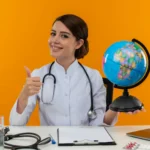Plasma Medicine: Safe Cure for Infections & Wounds
With global trends indicating rising incidence of antimicrobial resistance, innovative solutions can be said to urgently need development. Common antibiotic agents are becoming ineffective and many wounds may go untreated even under advanced care available today. In this scenario, plasma medicine and cold atmospheric plasma (CAP), in particular, are hoping to turn the tide. With the advantages of safety and an ability to eliminate drug-resistant bacteria while promoting wound healing without thermal effects, CAP stands out. As more research and clinical applications unfold, this upcoming technology may have the potential to redefine modern medicine.
This blog will take a look at the mechanisms of plasma therapy, its most powerful applications in medicine and why India and Regimen Healthcare may also be your best option for advanced plasma treatment.
What Is Plasma Medicine?
To understand plasma medicine, one must start out with a crash course in basic sciences. Matter exists in four fundamental states: solid, liquid, gaseous and plasma. Plasma is often referred to as the fourth state of matter, created when energies are imparted to a gas such that ionization occurs- a blend of ions and free electrons. Though naturally occurring plasma (such as in lightning and the sun) is very common, its application in medicine is fairly recent.
Cold atmospheric plasma refers to a type of plasma that is maintained at a relatively low temperature. This property is essential, as it permits the plasma to be applicable on living tissues without burns or harm to healthy tissue. The technique of creation of CAP consists in the use of plasma-generating devices that energize the room-temperature air or gases. Further feature making CAP particularly appealing is its ability to generate reactive oxygen and nitrogen species (ROS & RNS), which exert strong antimicrobial effects.
This treatment modality, generally termed plasma therapy, is now being employed for wound infection treatment and tissue regeneration. This is seen as a breakthrough by the medical community, especially on conditions for which conventional treatments have failed.
The Threat of Drug-Resistant Bacteria
- Drug-resistant bacteria like MRSA, VRE, and multidrug-resistant TB pose serious global health threats.
- Overuse and misuse of antibiotics have led to limited treatment options.
- These infections are increasingly difficult to treat, even with strong antibiotics.
Plasma Medicine: A Promising Alternative
- Plasma therapy targets bacteria through multiple pathways:
- Oxidative stress
- Membrane damage
- DNA disruption
- Oxidative stress
- This broad mechanism reduces the chance of resistance development.
The Hope Ahead
- Plasma therapy offers a new lifeline as antibiotic resistance grows.
- It could save millions threatened by untreatable infections each year.
How Plasma Energy Kills Bacteria
The antimicrobial effects of cold atmospheric plasma are both highly effective and intricate. It produces a cocktail of charged particles, ultraviolet photons and reactive species when applied at a wound or infection site.
These elements interact with bacterial cells leading to:
- Destruction of bacterial cell membranes
- Oxidation of cellular material
- Inhibition of metabolic pathways
- Degradation of bacterial DNA and proteins.
The most interesting feature of CAP is that it penetrates biofilms. These are protective layers formed by bacteria making it difficult to remove them using antibiotics. Removal of biofilms is another advantage of plasma treatment, as it can physically destroy and chemically attack such defensive structures.
Cold atmospheric plasma is neither selective nor antimicrobially active; it acts against bacteria and fungi, and even viruses. It makes CAP highly efficient for clinical purposes, especially where infection control is important.
Accelerating Wound Healing with Plasma Treatment
Besides fighting infections, plasma energy also accelerates healing within. This double effect makes plasma medicine ideal for chronic wound types, such as diabetic ulcers, pressure sores and post-operative wounds that usually heal slowly.
This is how plasma therapy helps in tissue repair:
- Enhances microcirculation: Better blood flow brings more oxygen and nutrients to the wound.
- Stimulates cell regeneration: CAP stimulates fibroblast and keratinocyte activities and both are essential for new skin formation.
- Decreases inflammation: These reactive species help modulate the body’s inflammatory response.
- It preserves moisture equilibrium: Treatment with plasma does not dry up the wound, which is vital for its healing.
Researchers have conducted a lot of studies in clinical settings to prove the great advantage of reduced healing time of plasma therapy, particularly in scenarios where conventional management has failed. Hospitals and wound care centers in Europe and Asia have reported integrating plasma technology into their protocols with admirable outcomes.
Is Plasma Treatment Safe?
Patient safety is one of the common questions posed by patients, it present evidence indicates that CAP, when used properly, is generally well tolerated. Given the cool nature of treatment, there will be no thermal burns to the skin or underlying tissues; thus, the side effects would be minimal, with only mild tingling sensations or redness appearing immediately after treatment.
All plasma devices employed in medicine which are calibrated to provide precision and safety, most are handheld devices with a non-invasive nature. Hence they are easy to use by health professionals and easy for patients.
Safety-wise, initial clinical data support a favorable profile, especially when compared with more aggressive treatment interventions such as thorough debridement or chemical antiseptics, while large-scale studies are still in progress.
Benefits Over Traditional Therapies
What sets plasma medicine apart from traditional antibiotics or wound care techniques?
- No resistance development: Unlike antibiotics, there’s no evidence that pathogens can develop resistance to plasma energy.
- Targeted yet broad-spectrum: Effective against a wide range of pathogens without harming healthy cells.
- Non-invasive and pain-free: Especially important for vulnerable patients with chronic wounds.
- No systemic side effects: Plasma treatment is localized, so it doesn’t affect the rest of the body.
- Versatility: Can be used in dermatology, dental care, oncology, and even sterilization procedures.
These advantages make plasma therapy a highly attractive option for both doctors and patients, especially as global health systems search for sustainable solutions to antibiotic resistance.
The Future of Plasma Medicine
Research on plasma technology is rapidly growing, expanding into realms beyond wound healing and infection control. In addition, some other exciting avenues under consideration include:
- Cancer therapy: Initial studies showed that CAP can potentially eliminate cancer cells without affecting healthy ones.
- Dermatology: Acne, psoriasis, etc. treatment.
- Dentistry: Treatment of gum disease, root canal disinfection, and oral ulcers.
- Sterilization: Plasma sterilizers are superior to chemical methods for sterilizing surgical implements and hospital surfaces.
Global space agencies are investigating the therapy for astronauts since they are more susceptible to infections and delayed wound healing in microgravity. The idea that a plasma device could accompany a mission to Mars to treat burns or wounds in space is fast approaching reality.
Technology maturation will bring an increase in portable, cheap, and AI-compatible plasma devices and applications. As a result, this will change the example of how infections and wounds are treated.
Challenges and Limitations
The promise of plasma medicine notwithstanding, some hurdles still remain:
- Cost: Plasma-generating equipment can be expensive, limiting access in lower-resource regions.
- Lack of awareness: Many clinicians still do not know about the technology.
- Need for training: Proper applications demand specialised knowledge.
- Regulatory grounds: Approval processes through organizations such as the FDA and EMA can be slow.
However, in overcoming these hurdles, more studies will continue to approve it as efficacious and safe, while equipment will become more accessible.
Why Should You Choose Regimen Healthcare?
At Regimen Healthcare, we bridge international patients with India’s most advanced hospitals and cutting-edge technologies. Our team ensures:
- Personalised guidance before, during and after treatment
- Access to top doctors and state-of-the-art plasma therapy centers
- Affordable packages with transparent pricing
- Full support in visa, travel, accommodation, and translation services
Choosing us means choosing expertise, compassion, and care that extends beyond the hospital walls.
Why India for Plasma Medicine?
India is becoming a global hub for medical innovation and plasma medicine is no exception. The reasons to choose India include:
- Highly skilled doctors experienced in plasma therapy
- Accredited hospitals equipped with advanced plasma technology
- Significantly lower treatment costs compared to the West
- Minimal waiting times and fast-track appointments
Patients from around the world are already benefiting from India’s blend of medical excellence and hospitality.
Conclusion: A Bright Future with Plasma Medicine
Having thus much so for human behavior lifting toward fame by its fanciful-sounding name-“plasma therapy” follows scientifically so much; a technique based on cold atmospheric plasma found by doctors and scientists who have opened yet another border in the healing of drug-resistant bacteria and chronic wounds.
A broad-spectrum antimicrobial agent that can penetrate biofilms and enhance tissue repair, plasma medicine is in the forefront of yet another next-generation medical technology. Further studies seem necessary but encouraging outlooks for the future arise from still-existing barriers.
After the traditional methods of counteracting bacteria had given way in effectiveness and acceptance, consequently, newly disbursed plasma may be the very breath of life in rekindling the battle against infection and furthermore, honoring the body with the natural process of healing.
Are you interested in further exploring advanced plasma medicine in India with trusted experts? Let Regimen Healthcare journey with you toward safer, faster healing. Contact our helpful team today for a consultation or to discuss your individual treatment plan.
📞 Call or WhatsApp us at +91-9310356465
🌐 Visit our website: www.regimenhealthcare.com
Frequently Asked Questions (FAQs)
1. What is plasma medicine?
Plasma medicine is a medical field that uses plasma energy, particularly cold atmospheric plasma, for treatment purposes like killing bacteria and promoting wound healing.
2. Is plasma therapy safe for humans?
Yes, when applied correctly, plasma therapy is safe, non-invasive, and generally well-tolerated with minimal side effects.
3. Can plasma treatment kill drug-resistant bacteria?
Yes, CAP has proven effective against various drug-resistant bacteria by attacking their structures through multiple pathways.
4. How does plasma energy help in wound healing?
Plasma improves blood flow, reduces inflammation, promotes tissue repair, and helps regenerate skin cells.
5. What types of wounds can be treated with plasma therapy?
Chronic wounds like diabetic ulcers, pressure sores, and surgical wounds benefit significantly from plasma treatment.
6. Is plasma treatment painful?
No, it is typically pain-free. Patients may feel a mild tingling or warmth, but no burning sensation.
7. Are there any side effects of plasma medicine?
Side effects are rare and usually limited to mild redness or temporary sensitivity at the treatment site.






